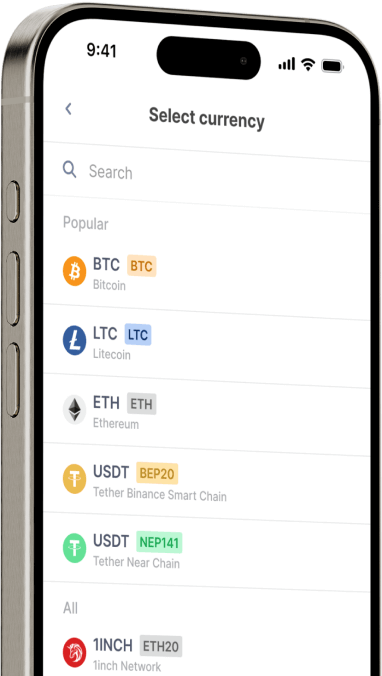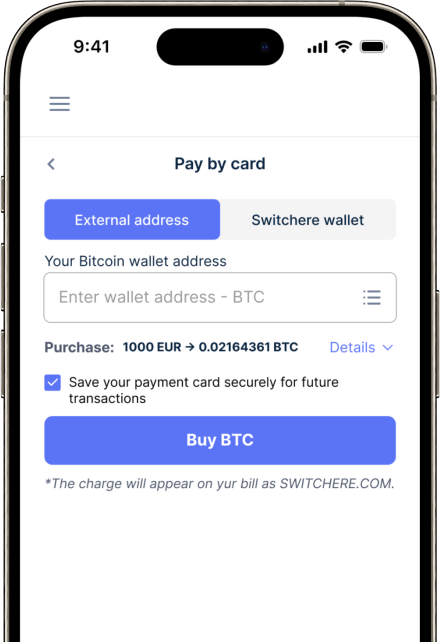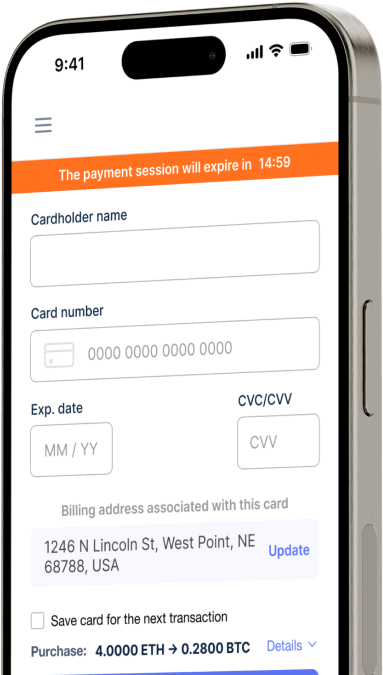Convert
Georgian Lari (GEL) to Celsius (CEL) Instantly
Purchase Celsius (CEL) with Georgian Lari (GEL) easily at Switchere and benefit from fast, secure transactions.
About
Celsius (CEL)
Celsius Network, with its native CEL token, emerged as a major centralized finance (CeFi) platform designed to bridge the gap between traditional banking and the world of digital assets. Its primary function was to offer users the ability to earn yield on their cryptocurrency holdings and to take out crypto-collateralized loans. The platform operated on a custodial basis, managing user funds to generate interest income through lending activities to institutional borrowers. This model positioned it as a user-friendly alternative for crypto holders seeking to put their assets to work without navigating complex DeFi protocols.
The CEL token was the core of its loyalty and rewards system. As a utility token, holding and using CEL provided tangible benefits within the Celsius ecosystem, such as preferential interest rates for both earning and borrowing. Users could receive higher yields on their deposited assets and lower rates on loans, with rewards often distributed weekly in the form of CEL. This tokenomics structure was designed to incentivize user loyalty and drive demand for the native asset. However, the platform faced significant operational challenges and market pressures, which ultimately led to a Chapter 11 bankruptcy filing, profoundly impacting its users and reshaping the narrative around risk in the CeFi lending industry.
Buy Other 150+ Cryptocurrencies for Georgian Lari (GEL)
Other Coins for Georgian Lari (GEL)
-
GEL to ZRX
-
GEL to 1INCH
-
GEL to AAVE
-
GEL to ACH
-
GEL to ALGO
-
GEL to TLM
-
GEL to ANKR
-
GEL to APE
-
GEL to NFT
-
GEL to API3
-
GEL to APT
-
GEL to ARPA
-
GEL to AUDIO
-
GEL to AVAX
-
GEL to AVAX
-
GEL to AXS
-
GEL to BADGER
-
GEL to BAL
-
GEL to BNT
-
GEL to BAT
-
GEL to BNB
-
GEL to BSW
-
GEL to BSV
-
GEL to BLUR
-
GEL to BONE
-
GEL to CTSI
-
GEL to CELR
-
GEL to CELO
-
GEL to CEL
-
GEL to LINK
-
GEL to CHZ
-
GEL to CHR
-
GEL to C98
-
GEL to COMP
-
GEL to CFX
-
GEL to PEOPLE
-
GEL to CVX
-
GEL to ATOM
-
GEL to CTC
-
GEL to CRV
-
GEL to DAI
-
GEL to DASH
-
GEL to MANA
-
GEL to DENT
-
GEL to DGB
-
GEL to DYDX
-
GEL to XEC
-
GEL to EOS
-
GEL to ETC
-
GEL to ENS
-
GEL to ETHW
-
GEL to FET
-
GEL to FIL
-
GEL to FLOKI
-
GEL to GALA
-
GEL to GNO
-
GEL to ONE
-
GEL to HBAR
-
GEL to HOT
-
GEL to HOOK
-
GEL to ICX
-
GEL to ILV
-
GEL to IMX
-
GEL to INJ
-
GEL to ICP
-
GEL to IOST
-
GEL to IOTX
-
GEL to JASMY
-
GEL to JST
-
GEL to KAVA
-
GEL to KCS
-
GEL to KSM
-
GEL to KNC
-
GEL to LDO
-
GEL to LQTY
-
GEL to LPT
-
GEL to LOOKS
-
GEL to LRC
-
GEL to LUNA
-
GEL to MKR
-
GEL to MASK
-
GEL to EGLD
-
GEL to ALICE
-
GEL to NEAR
-
GEL to XEM
-
GEL to NEXO
-
GEL to NOT
-
GEL to NMR
-
GEL to OKB
-
GEL to OMG
-
GEL to ONT
-
GEL to EDU
-
GEL to OP
-
GEL to OGN
-
GEL to CAKE
-
GEL to PAXG
-
GEL to PENDLE
-
GEL to DOT
-
GEL to POL
-
GEL to QTUM
-
GEL to QNT
-
GEL to RDNT
-
GEL to XRD
-
GEL to RVN
-
GEL to REN
-
GEL to RSR
-
GEL to RLC
-
GEL to RPL
-
GEL to SFP
-
GEL to SHIB
-
GEL to SKL
-
GEL to SXP
-
GEL to STND
-
GEL to STG
-
GEL to XLM
-
GEL to GMT
-
GEL to STORJ
-
GEL to STMX
-
GEL to SUSHI
-
GEL to SNX
-
GEL to USDT (Polygon)
-
GEL to USDT (AVAC)
-
GEL to USDT (BEP20)
-
GEL to USDT (ERC20)
-
GEL to USDT (SPL)
-
GEL to USDT (NEP141)
-
GEL to USDT (FA2)
-
GEL to USDT (TRC20)
-
GEL to USDT (JETTON)
-
GEL to XTZ
-
GEL to GRT
-
GEL to SAND
-
GEL to TFUEL
-
GEL to THETA
-
GEL to RUNE
-
GEL to TON
-
GEL to TUSD (BEP20)
-
GEL to TUSD (TRC20)
-
GEL to TWT
-
GEL to UOS
-
GEL to UMA
-
GEL to UNI
-
GEL to USDC (Polygon)
-
GEL to USDC (SPL)
-
GEL to USDC (OP)
-
GEL to USDC (BEP20)
-
GEL to USDC (AVAC)
-
GEL to USDC (ARB)
-
GEL to USDC (ERC20)
-
GEL to VET
-
GEL to VRA
-
GEL to WAXP
-
GEL to WOO
-
GEL to WLD
-
GEL to WBTC
-
GEL to WMINIMA
-
GEL to XDC
-
GEL to YFI
-
GEL to YGG
-
GEL to ZIL
How to Buy Celsius (CEL)
Frequently Asked Questions
-
What does the GEL/CEL trading pair represent in the digital asset market?
The GEL/CEL trading pair represents the process of purchasing Celsius (CEL) tokens using Georgian Lari (GEL). This is a fiat-to-crypto transaction where GEL acts as the fiat on-ramp to acquire CEL. Historically, the CEL token was the utility token for the Celsius Network, a centralized finance (CeFi) platform that offered interest-earning accounts and crypto-backed loans. This pair's liquidity depended on cryptocurrency exchanges that supported both GEL deposits and CEL trading.
-
What was the primary utility of the CEL token within the Celsius Network ecosystem?
The CEL token's primary utility was rooted in the Celsius Network's 'flywheel' tokenomics model. By holding CEL tokens in their digital wallet on the platform, users could access loyalty tiers that provided benefits. These included earning higher interest rates on deposited crypto assets (weekly rewards), getting discounts on loan interest payments, and earning bonus rewards paid in CEL. The more CEL a user held relative to their other assets, the higher their loyalty tier and the better the benefits, creating a demand cycle for the token within its ecosystem.
-
What is the current status of the CEL token following the Celsius Network bankruptcy?
Following the Celsius Network's Chapter 11 bankruptcy filing, the CEL token has lost its original utility. The benefits it provided, such as enhanced interest rates and loan discounts within the platform, are no longer available as the platform ceased operations. The token still exists as an ERC-20 token on the Ethereum blockchain and can be traded on some exchanges, but its value is now highly speculative and primarily driven by market sentiment related to the bankruptcy proceedings and creditor claims, rather than its former tokenomics.
-
What were the common methods for buying CEL with Georgian Lari?
Historically, to buy CEL with GEL, a user would need a cryptocurrency exchange that supported GEL deposits. The typical process involved setting up an account on such a platform, completing KYC/AML (Know Your Customer/Anti-Money Laundering) verification, and then funding the account via a Georgian bank transfer. Once the GEL was credited, the user could place an order on the GEL/CEL order book to execute the digital asset purchase. Availability was limited as few global platforms directly paired GEL with altcoins like CEL.
-
Are there specific regulatory considerations when using GEL for crypto purchases in Georgia?
Yes, regulations in Georgia for cryptocurrency are evolving. While crypto is not illegal, the National Bank of Georgia has issued warnings about the risks. Financial institutions are required to apply enhanced due diligence and KYC/AML compliance for transactions related to digital assets. This means that when using a Georgian bank transfer (GEL) to fund an exchange account, the transaction will be monitored. Users must trade on platforms that are compliant with these local regulations to ensure a smooth fiat on-ramp process.
-
What are the security risks to consider when trading a pair like GEL/CEL?
Security risks for GEL/CEL involve both fiat and crypto aspects. For the GEL side, ensure you use secure, regulated payment channels and be wary of phishing attempts related to your bank account. On the crypto side, the primary risk is custodial. If you hold CEL on a centralized exchange, you are exposed to that exchange's security vulnerabilities. Given CEL's current speculative nature post-bankruptcy, it is also subject to extreme price volatility and low liquidity, which are market risks. Always use strong, unique passwords, enable two-factor authentication (2FA) for your exchange account, and understand that self-custody in a private digital wallet offers more control but requires you to secure your own private keys.




